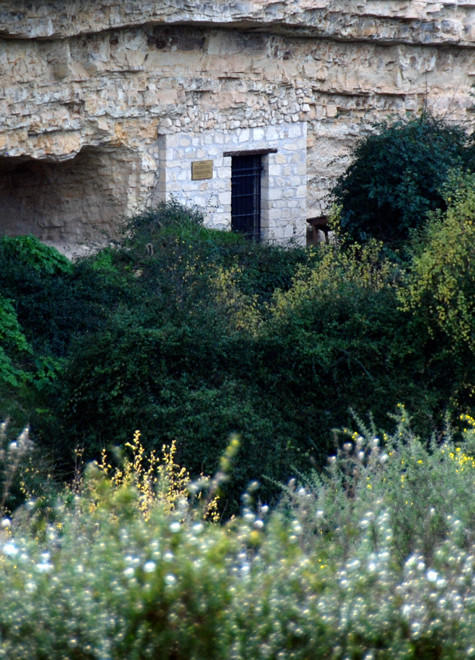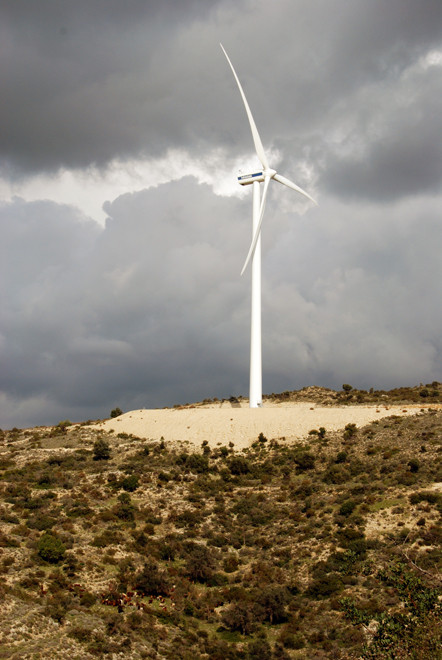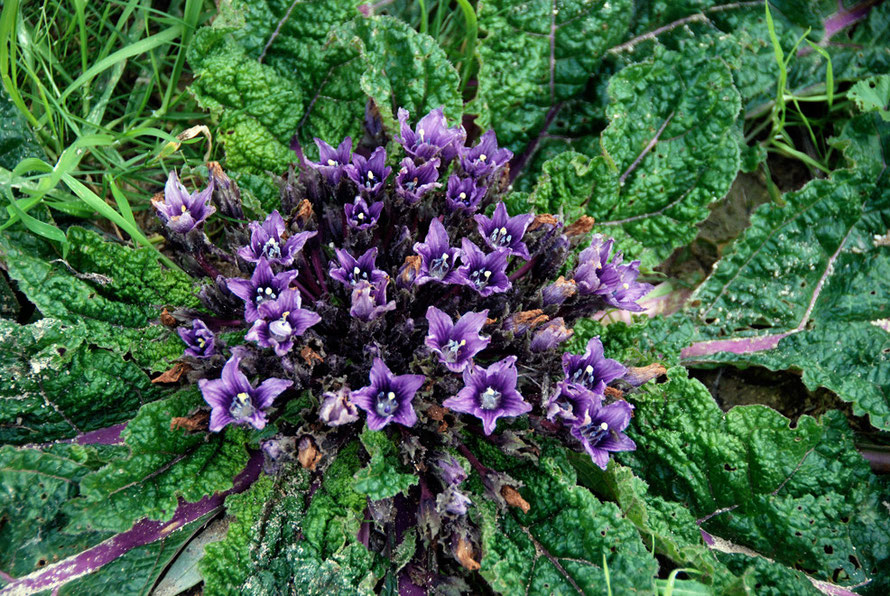Historical Places IX: Agios Konstandinos, Kouklia
On our last day of our January 2013 visit we schlepped over the high Troodos after re-visiting Asinou church. We climbed the long valley past Kakopetria wondering if the snow and low cloud would let us through. It got foggier and foggier, with cold rain pelting down onto the melting snow at the side of the road.
Up and up we went through the mirk and over a saddle and started descending through straggling villages that could have been in Blaenau Ffestiniog in North Wales for their grey, soaked, dismal appearance. Gradually the Brutia pine and snow drew back from the road. We were stuck behind a big low-loader easing its way down the steep road and it was a relief to have something in front to follow.
I lost my bearings again at the Pefkos Junction (see Pitsilia Hills) outside Kalo Chorio and managed to drive down the same exit twice and arrive at the same garden centre twice. Eventually we got sorted out and took a minor road - the F612 - beyond Malia that wound its long way down the spur of the Troodos to Kouklia.
We passed vineyards with the bush-trained vines sitting in their treacherous, treacly marl-based soils in the falling rain. At a junction a vista of golden-leaved trees appeared. Taking some photos I could hear partridge calling in the rough-looking pasture below. The little lay-by was scattered with orange and grapefruit peel - a sure sign of winter in Cyprus.
Then we rattled down the narrow road that ran between dry-stone walls that had been battered down into the carriageway by goats' hooves. We passed a policeman and a shepherd peering down over the high valley side and drove through forsaken-looking mountain villages - Dhora (the last of the Krassochoria wine villages) and Mousere - and then skirted under a more prosperous village close-enough to the fleshpots of Paphos to be getting the villa-treatment (Pano Archimandrita).
We passed more goats and olive trees that looked worse for their exposure to the weather on the ridge tops. The road kept to the spur and climbed up into the Oreites Forest. The Archimandrita community website says that much land has been abandoned here and that viticulture has stopped altogether. The country had a pretty desolate air to it.
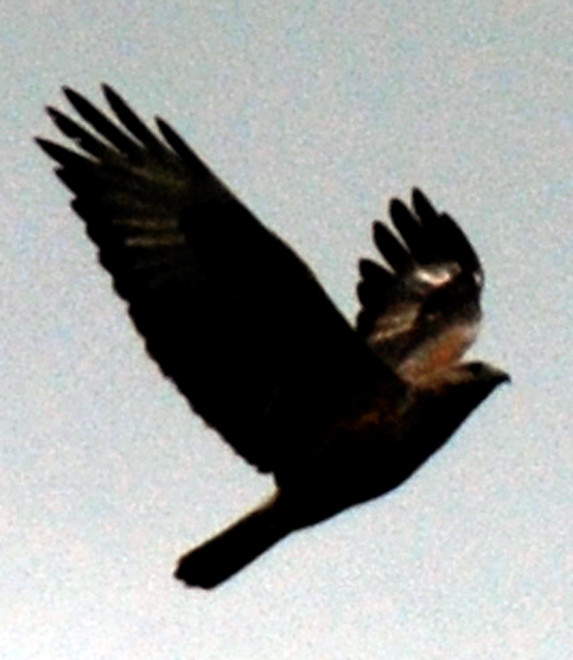
The Forest was an important source of wood for the Kouklia medieval sugar industry but now consists of young Pine growth and Cyprus's first wind farm; the cause of some controversy because built in a wildlife reserve without consideration for the local birdlife (see BL Cyprus blog). The huge blades were turning in the brisk breeze.
The road wound on until it was running along the canyon-like edge of the west-facing valley with spectacular views across the olive groves, fields and hills towards Paphos. We spotted a chapel tucked into the nearest groves and with some hesitation left the road to inch down a steep concreted-trackway to the valley bottom.
This is the church of Konstandinos and Eleni (Constantine and Helen) and it is said that it formed the centre of a monastery that was destroyed in Ottoman times. It was restored some forty years ago but as the Kouklia village website says it is quite 'poor and humble'.
But for me this was part of its charm, surrounded by grand olive trees blushing their leaves in the blowing wind, with a herd of goats grazing nearby and wild anemones scattered through the meadows.
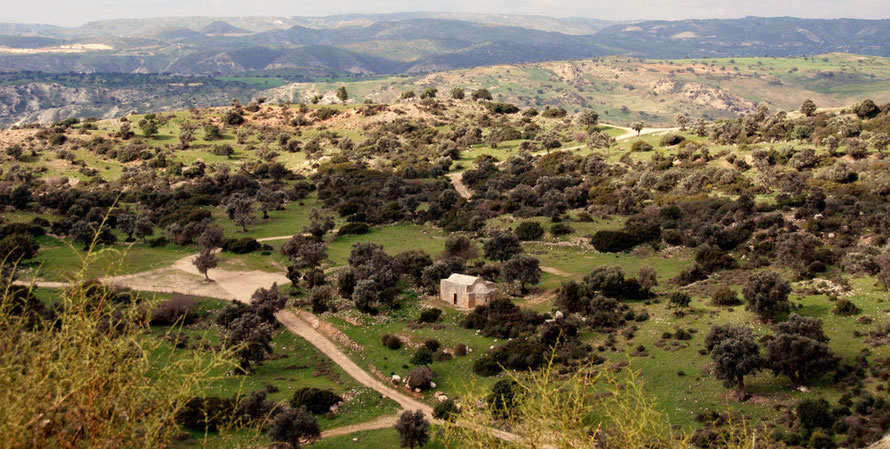
We had the place to ourselves but for the big raptor that soared over the top of the chapel. I pulled an olive from one of the trees but though black it was as bitter as gall.
As often with out of the way churches that appear to be used more as picnic grounds than places of worship there was a lot of plastic rubbish strewn around.
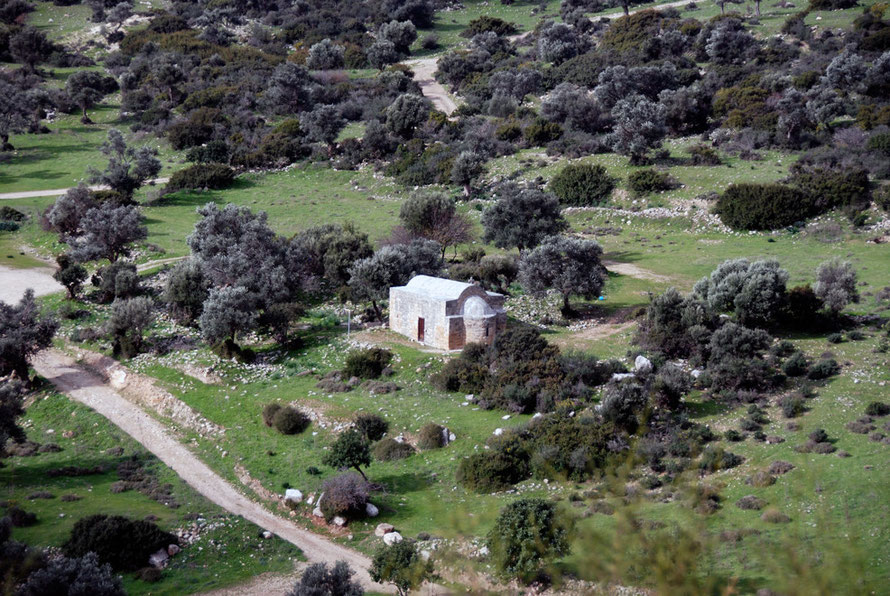

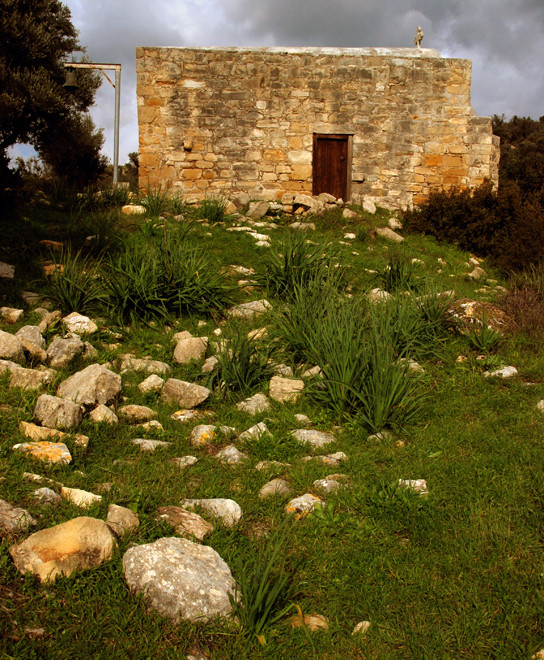
As well as the anemones there was a strange, low, spreading plant with purple- stalked leaves that looked a bit like Swiss Chard and a slightly disheveled grouping of purple-petalled flowers (or more precisely penduncles) at its centre.
This is the Mandrake plant (Mandragora officinarum) which is associated with many strange myths and folklore. The plant itself is part of the Nightshade family and all parts of it are poisonous and contain 'deliriant hallucinogenic tropane alkaloids'. The root is bifurcated and said to resemble a human being.
The first myth surrounding the plant is that it is supposed to scream when pulled up and anyone hearing that scream will die. Hence all sorts of ruses were developed to lift the roots without hearing the scream. One popular one being to tie a dog to the semi-excavated plant. Poor old dog unwittingly pulls the roots up and dies instantly on hearing the screams but then his clever owner can access them for his purposes - innocent or not.
A second myth was that the plant would only grow where the semen of a hanged man had dripped on to the ground (see Wikipedia: Mandrake). Strangely enough the simple support for the church's external bell could easily be mistaken for a gibbet from a distance.
I'm pleased to say we were unaware of these bits and pieces of folklore at the time as I was unaware that the strange plant was indeed the fabled Mandrake.
It was nice to stop and stretch our legs in such a beautiful, peaceful and hallowed spot. We got back in the car and crunched back over the stony track and river crossing to the concrete ramp. I took a picture of a distant and smartly walled-in cave in the cliff-wall of the valley.
This is the Palea Enklistra, a mid-fifteenth century grotto with frescoes that are highly rated by Marc Rubin in the Rough Guide (2009: 167). But we continued on our way and stumbled across the Sanctuary of Aphrodite in Kouklia.
